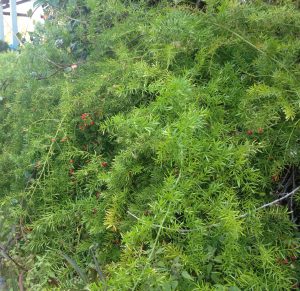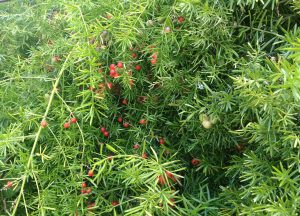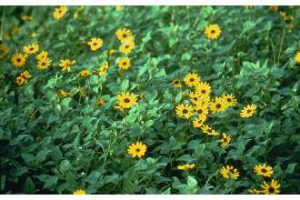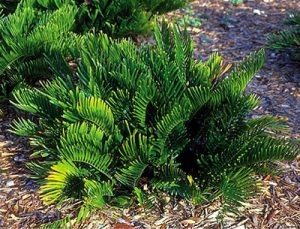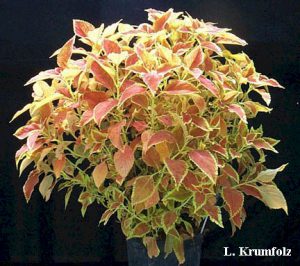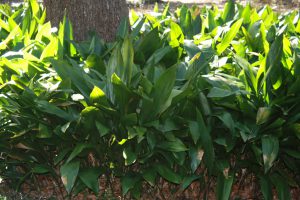As an extension agent, I’m always curious of what plants folks are using in the landscape. One plant I’ve been noticing more and more of in north Florida, both in containers and in landscape beds, is asparagus fern. Three different plant species go by the name asparagus fern – Sprenger’s fern (Asparagus aethiopicus), foxtail fern (Apsaragus densiflorus), and lace fern (Asparagus setaceus). Property owners should refrain from selecting these plants since they are another example of invasive, exotic species that can spread to natural areas and effect native plant communities.
Native to South Africa, Asparagus species are technically not a fern, but related to lilies, and, yes, asparagus. Its ease of growth has made them a go-to choice for gardeners looking for a hardy, attractive plant. Unfortunately, the red berries that follow the small, white, scented flowers are fed on and spread by birds. The seeds germinate easily and can become established in other parts of the garden or, even worse, a local natural area. The ability of Sprenger’s fern to spread into and disrupt natural ecosystems has earned it a spot on the Florida Exotic Pest Plant Council’s List of Invasive Species as a Category I invasive plant. Category I plants are reserved for those plants that have been documented as causing ecological harm to Florida’s ecosystems. Foxtail fern and lace fern should also be used with caution.
To remove asparagus fern from the landscape, manual or mechanical removal can be effective for small areas. Be careful to dig up all roots. For larger areas, the use of a dilute glyphosate herbicide product will provide control. Retreatment may be necessary.
If you’re looking for other alternatives to asparagus fern, try these Florida-Friendly alternatives: Coastal sunflower (Helianthus debilis), coontie (Zamia pumila), Coleus (Plectranthus scutellarioides), or Cast Iron plant (Aspidistra elatior).
- A Tale of Two Hoses - November 13, 2025
- Anthracnose and Aster Yellowing Diseases Recently Diagnosed - August 28, 2025
- Let Extension Diagnose Your Landscape Issues - May 28, 2025

